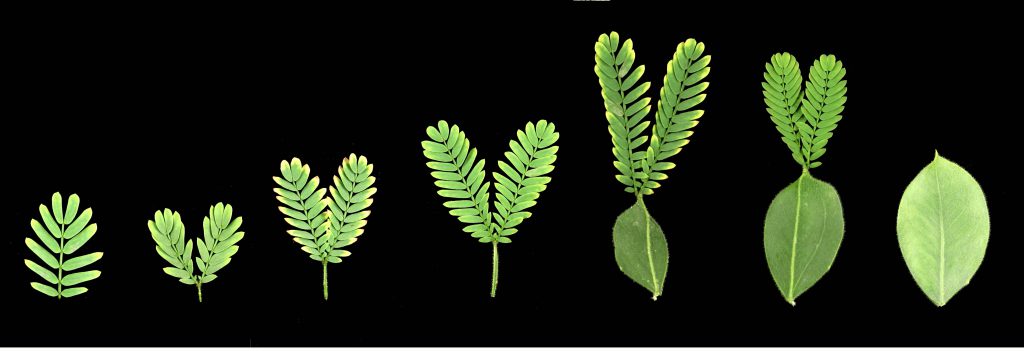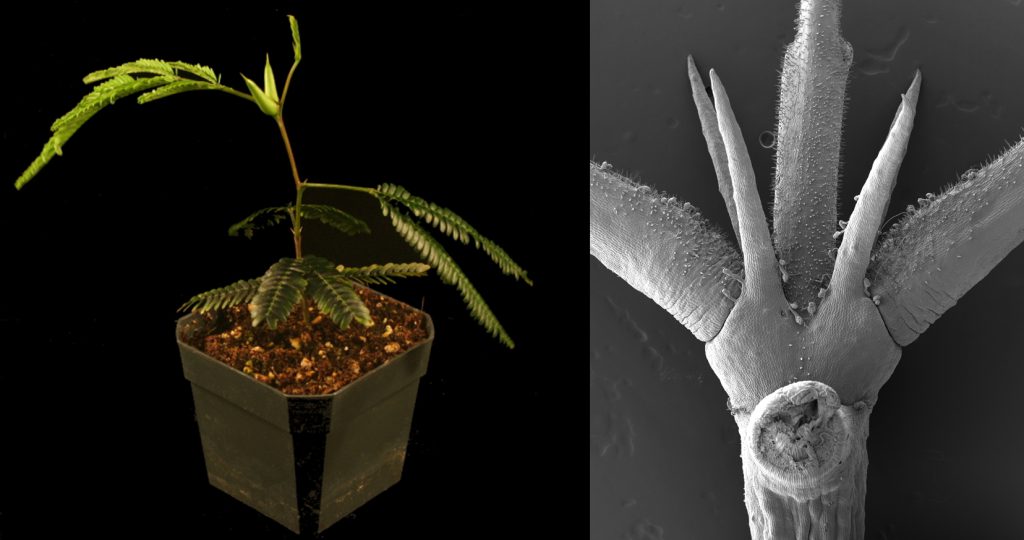ABOUT ME
I am a new PI at the USDA Plant Gene Expression Center in Albany, CA. Previously I worked as a postdoc with Neelima Sinha and did graduate training with Scott Poethig (University of Pennsylvania) and David Pfennig (UNC Chapel Hill). A lab page will be coming soon (https://pgec.berkeley.edu/).
RESEARCH INTERESTS
Many climates are becoming more variable, hot, and dry. Improving crops to survive and thrive in these new conditions is paramount for maintaining food security. I believe plants adapted to arid and semi-arid climates are key to this response, as they are repositories of morphological diversity not found in many crop species. My current work is focused on developing a research program that facilitates the investigation and translation of morphological traits found in arid and semi-arid legumes to classic legume crops such as alfalfa and soybean. This includes the examination of a classic developmental oddity–the unifacial leaves of woody legumes (found in some of the most arid ecosystems of Australia)–using RNA sequencing to identify difference in genetic regulatory networks and transgenic approaches for manipulating key genes. Additionally, I am equally interested in the mechanisms regulating developmental timing in woody crops. For this, I am using models such as poplar and citrus, and non-models such as Acacia and woody Medicago to examine and identify known and unknown mechanisms of juvenility and maturation. The ability to manipulate and shorten the juvenile phase in woody crops will further aid in improving crops in a rapidly changing world.


PUBLICATIONS
H. Nakayama, A.R. Leichty, and N.R. Sinha. (2022) Molecular mechanisms underlying leaf development, morphological diversification, and the beyond. The Plant Cell (in press).
A.R. Leichty and N.R. Sinha. (2022) A grand challenge in development and evodevo: quantifying the role of development in evolution. Frontiers in Plant Science https://doi.org/10.3389/fpls.2021.752344.
A.R. Leichty and N.R. Sinha. (2021) Development: How competing modes of growth coexist in close proximity. Current Biology 31, R472-474.
E.H. Lawrence, A.R. Leichty, C. Ma, S.H. Strauss, R.S. Poethig. (2021) Vegetative phase change in Populus tremula x alba. New Phytologist 231, 351-364
A.R. Leichty & R.S. Poethig. (2019) Development and evolution of age-dependent defenses in ant-acacias. PNAS 116: 15596-15601.
M. Xu, A.R. Leichty, T. Hu, & R.S. Poethig. (2018) H2A.Z promotes the transcription of MIR156A and MIR156C in Arabidopsis by facilitating the deposition of H3K4me3. Development 145: dev152868.
A.R. Leichty & D. Brisson. (2014) Selective whole genome amplification for resequencing target microbial species from complex natural samples. Genetics 198: 473-81.
A.R. Leichty, D.W. Pfennig, C. Jones & K.S. Pfennig. (2012) Relaxed genetic constraint is ancestral to the evolution of phenotypic plasticity. Integrative and Comparative Biology 52:16-30.
A.M. Rice, A.R. Leichty & D.W. Pfennig. (2009) Parallel evolution and ecological selection: replicate character displacement in spadefoot toads. Proceedings of the Royal Society of London Series B 276:4189-4196.
CONTACT
aleichty@gmail.com
aaron.leichty@usda.gov